Name any one of the most famous and prolific photographers, and chances are you can probably remember only a small handful of their images. Even more surprisingly, if you spend a bit of time digging into their published collections, you’ll find that there are dozens more that you probably like better than their famous ones; photography is, after all, personal and subjective. But think about this for a moment: assuming that what you see is only what they choose to show you (being the effect of conscious exclusion at work again) – it makes you wonder exactly what didn’t make the cut.
The only conclusion we can come to is that what we see is the product of heavy censorship on both the part of the photographer and their editor(s). Should we be lucky enough to see a person’s work in the raw, and in entirety, you’d probably find that there is quite a lot of experimentation that didn’t make the cut – and that’s fine. However, what I’m left wondering is just how much control the photographer has over which of their images they’re remembered for – assuming of course you can’t receive attribution for images you didn’t take, so there’s no way for instance Testino will ever be remembered for photographing baby elephants (unless there are celebrities involved, I suppose).
And here we face Disconnect Number One: you can be an artist who chooses only to show certain work which you solely deem worthy, but at the huge risk that your point of view is onto a popular one and you never manage to find an audience. At the other end of the spectrum lies the production of solely popular work; you only make images that fit in to the current pop culture gestalt (this almost certainly biased, but I’m thinking bad HDR, kittens, too many lo-fi filters, and perhaps an overdone vignette) and as a result have no real dominant personality or style of their own. It is of course more likely that your work fits somewhere in the middle – it’s difficult to be so completely original and unrelatable that you have no audience, but at the same time it’s almost impossible to avoid popular influences. Thus from the outset your conscious mind is not fully in control of the images you make anyway: your subconscious plays a part, and that in turn is influenced by the world around us.
It’s a two way street, because we are humans and interact with our environment: images that receive positive feedback are the kind of thing we aim to reproduce or at least whose style and content we want to follow; images that don’t are probably work that we won’t repeat or won’t share as often. And thus we have a self-reinforcing cycle. It takes a lot of determination and conviction to avoid that becoming a fixed spiral.
The upshot of all this is that our personal judgement of our best work is almost never in line with that of our audience; it might not be too far off, or it might be significantly different. Again, remember the whole photography game is subjective: everybody has a different viewpoint born of their experiences, and as a result they have different preferences and dislikes; it is therefore impossible to make an image that appeals to all. In fact, I’d argue that the more strongly an image appeals to a single individual, the smaller the number of people that’s going to be: it’s more finely/ strongly targeted.
It has been argued both ways that the Mona Lisa is Da Vinci’s prime masterpiece, or not more deserving than of a footnote compared to the other great works he produced; I can’t help but wonder if the famous images were absolute favourites of the artists themselves. Take, for instance, one of Ansel’s Yosemite Half Dome moonrise frames, or perhaps HC-B’s man jumping over the puddle behind the Gare St. Lazare in Paris, Lange’s Migrant Mother, Guersky’s Rhein II or Corda’s portrait of Che Guevara – did they appeal at a primeval, visceral level or to some aspect of their being that they can’t really explain? I honestly cannot imagine this being the case for Rhein II, for example. Or some of HC-B’s other work. And I’m pretty sure Robert Capa wasn’t pleased that his Normandy landing series got botched by a lab tech – especially after the level of personal risk involved.
Personally, I believe the truth is somewhere in the middle: I won’t show work I’m not happy with, but I can’t only be showing nothing but my absolute favourites, either. Firstly, I wouldn’t have enough work to show; secondly, I wouldn’t be able to get any feedback on what people like and what they don’t. And since I’m a commercial photographer first and an art photographer second – I need that feedback. And to a greater degree, I also need the latitude for experimentation as I discover for myself what works and appeals to me from an artistic standpoint.
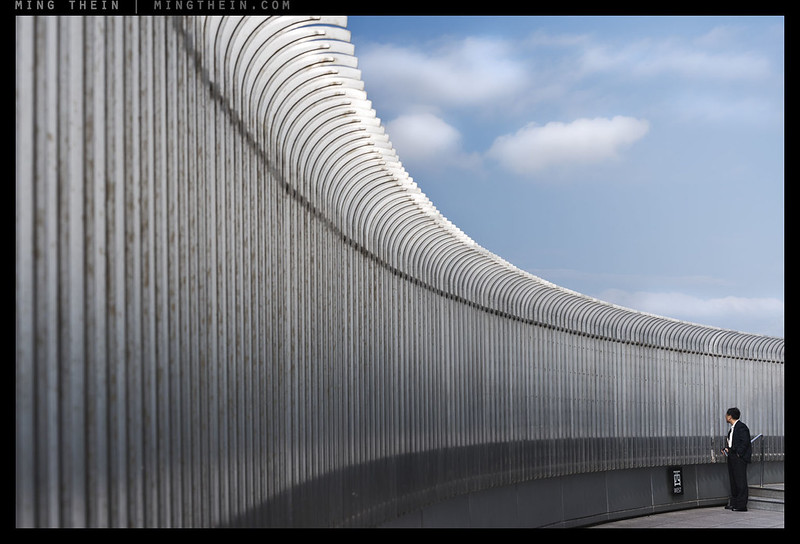
Only The Clouds Are Truly Free
The images illustrating this article are a mixture of three things: images that have proven popular with my usual audience for whatever reason; images that I’ve pushed because I like them, and have in turn become popular – you may recognise Only The Clouds Are Truly Free, Verticality I, Lone Tree and The Forest – but there are also a couple which appeal to me only, and seemingly nobody else. I have no explanation for these.
This brings me to the second Big Question: as a photographer, what images do you want to be remembered for? Is there a disconnect between what’s popular and what you like? Arguably, just because something is popular does not necessarily mean that it will be remembered for posterity: it may just be a passing fad. I doubt very much that the current trend for overfiltered images is going to be around in fifty years, much as hyper focal, hyper-detail B&W from the f.64 group isn’t exactly common today. In fact, I’d go so far as to say that you don’t want to be remembered for images that fit the current gestalt – simply because those are the images that will not stand out because there are so many of them. I would certainly want what I like to be as close to what’s popular amongst my audience as possible, but not necessarily popular amongst the greater general public.
Next problem: do you know who is your audience? If there is a disconnect between what is deemed popular and what you like, is it because you’re pitching to the wrong audience? I’m fairly sure that in my case, that discontinuity definitely exists. The majority of people who see my personal, artistic, work are photographers, not clients or art collectors/ buyers; there’s one huge problem right there. For all I know, I may be producing seminal work of future historical interest (though this is highly unlikely) – but since the audience wants to see test charts and camera reviews, it goes unnoticed except for how remarkably low the noise is or how sharp the corners are. I for one don’t think it’s that easy to precisely target the audience you want.
Personally, what I’m glad to see is that over time I’m seeing the convergence between what I like and what my audience likes – I don’t know if it’s the result of conditioning or perhaps me maturing and developing as a photographer, but I believe that it will make my life easier in future – at least from a commercial standpoint. Whether this makes any difference on the artistic front is another matter of course. Ultimately, I have to ask myself: would I want to be remembered for these? Certainly. Do they represent the majority of the work I do? No, but then again, if they did, they couldn’t be exceptional. Am I happy with them as images, public reaction aside? For the most part, yes. But are they my best images? I hope not; I would always like to believe that those are still to come. After all, isn’t that why we keep shooting? If we know we’ve already taken our best shot…why continue? MT
__________________
H2 2014 workshops now open for booking – Making Outstanding Images San Francisco, Chicago and Venice; Masterclass San Francisco and Venice – click here to book or for more info
____________
Visit the Teaching Store to up your photographic game – including workshop and Photoshop Workflow videos and the customized Email School of Photography; or go mobile with the Photography Compendium for iPad. You can also get your gear from B&H and Amazon. Prices are the same as normal, however a small portion of your purchase value is referred back to me. Thanks!
Don’t forget to like us on Facebook and join the reader Flickr group!
Images and content copyright Ming Thein | mingthein.com 2012 onwards. All rights reserved
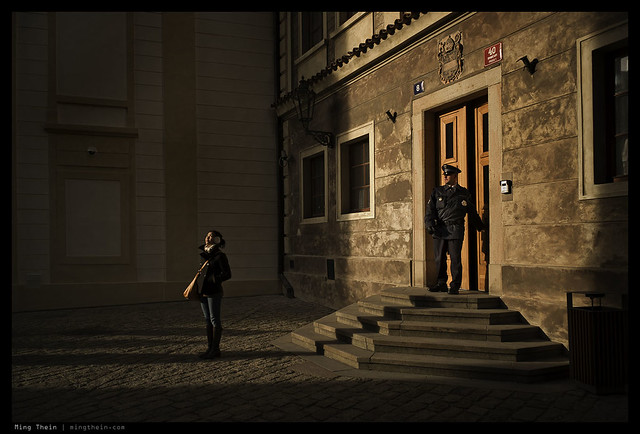
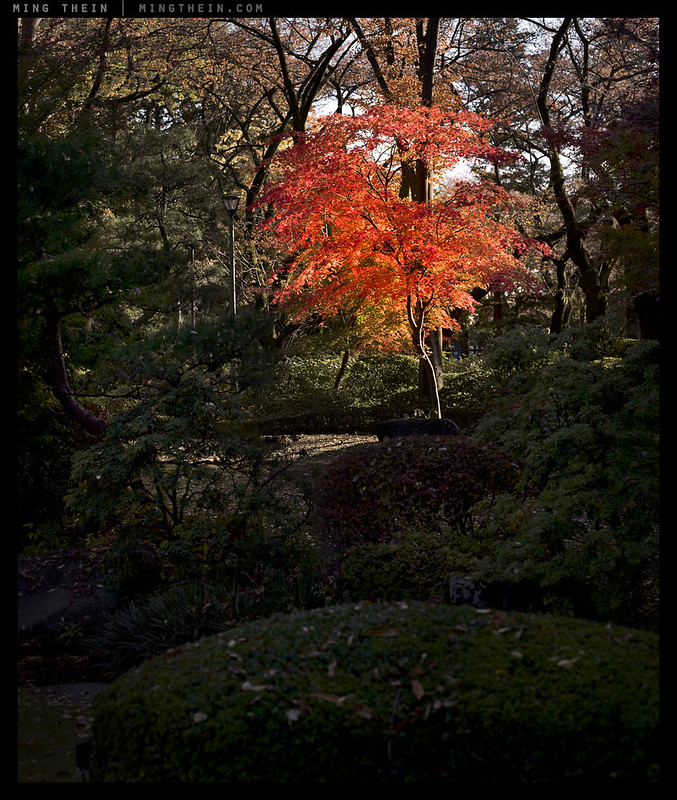
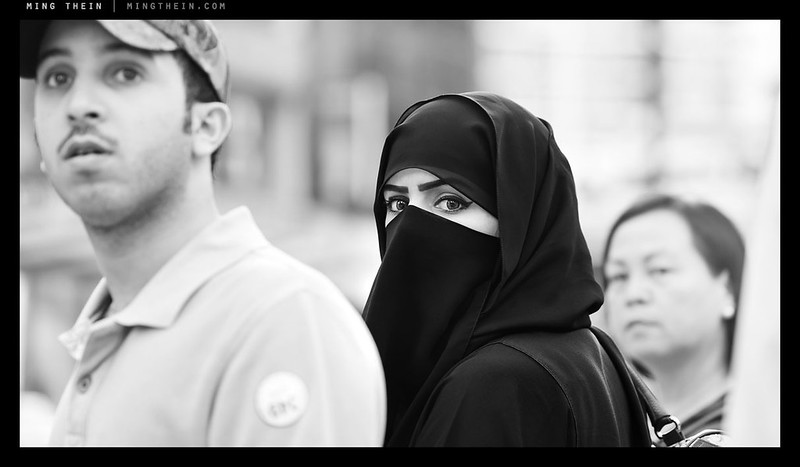

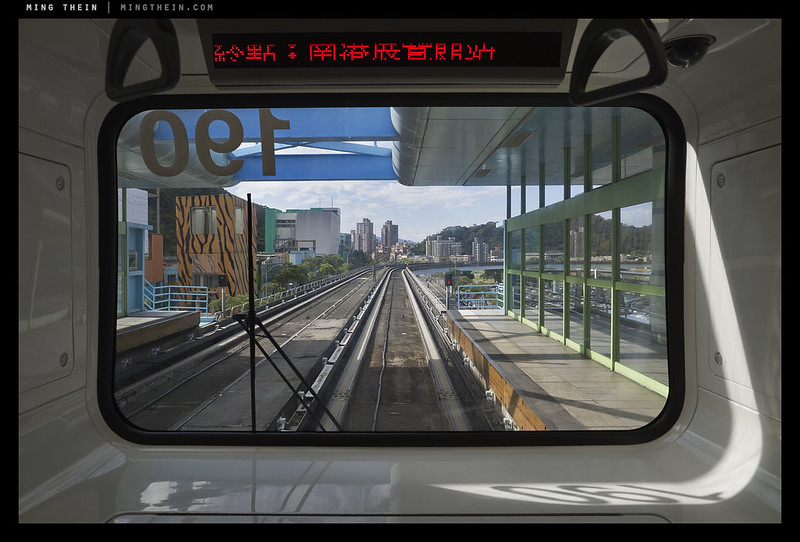
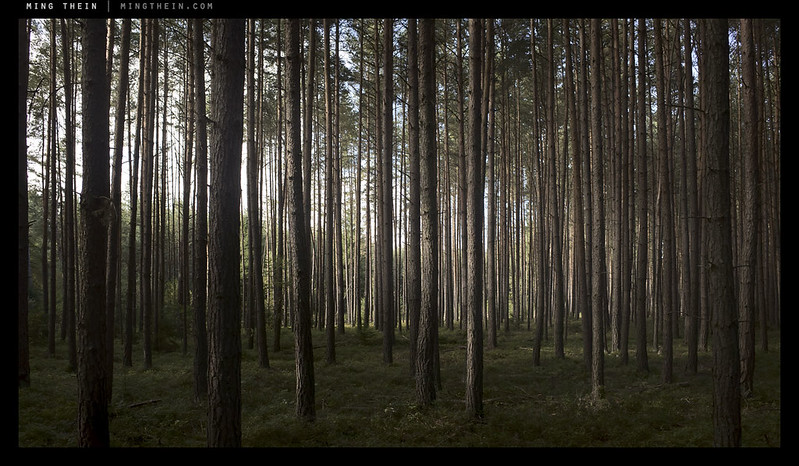
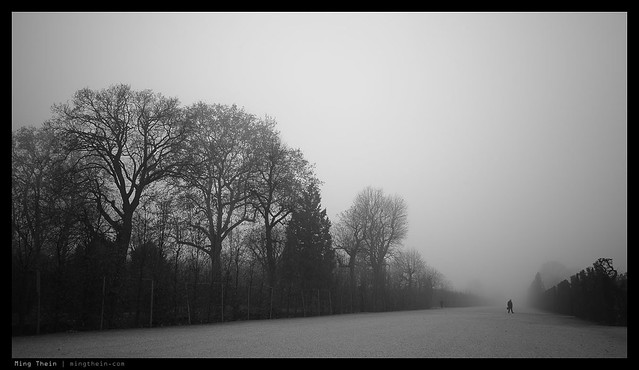
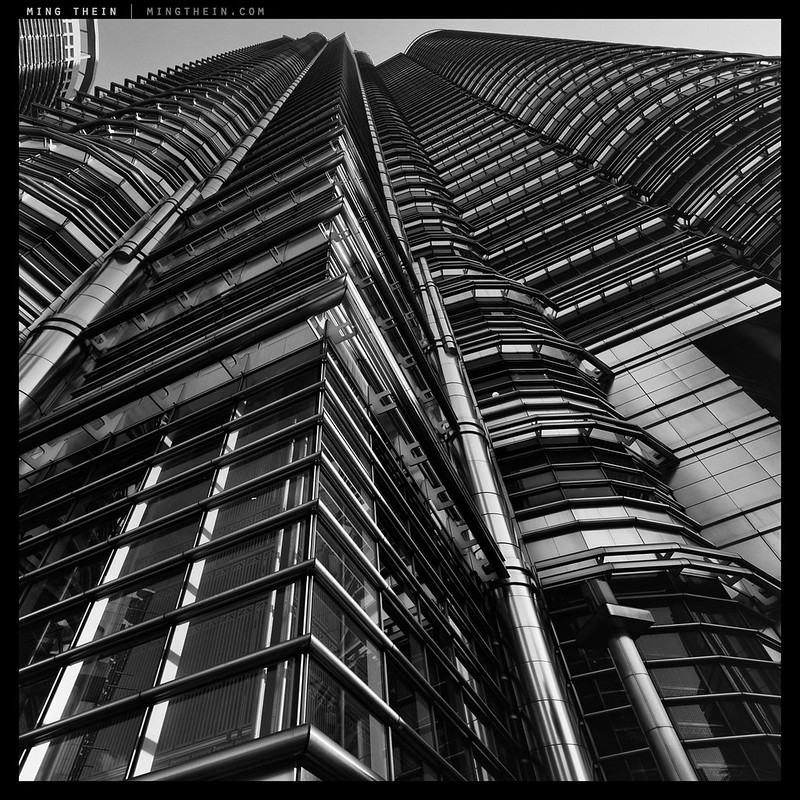
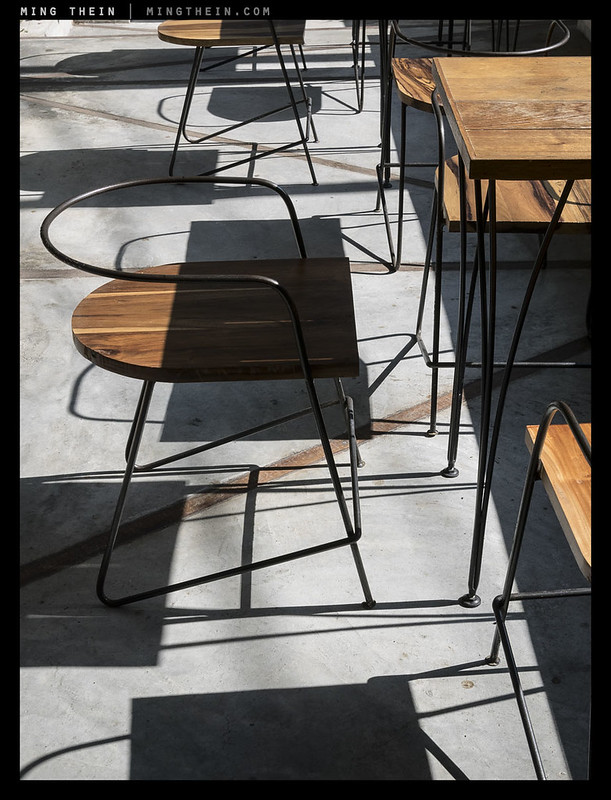






I apologise! Thanks a bunch!
Hi Ming,
i would like to know your opinion about the best sensor format for professional travel & landscape/nature photography! I would love to just take the m43 system due to size advantages, carry less, esp. smaller tele lens etc. but would the IQ be sufficient??? If you are at a place only one time in your life would you not have then the best IQ, DR?? So I’m thinking about is FF a must for my mentioned purposes.??? Adams, Bresson all landscape photographers used LF or medium format cameras due to DR…and there will some be low light situations as well but i dont know how many….is landscape photography all about DR? I jsut cannot find a decision….
Depends on what your final output is going to be – web, print or something else? I print large and high resolution, so for me the more the better. And there’s the tradeoff depending on how much you’re willing to carry. There isn’t that much difference between M4/3 and say 24MP APSC or FF at base ISO on a tripod, but quite an enormous jump to medium format (for instance).
Hmm. But the difference between M43 and Aps-c is much smaller than between Apsc vs. FF (let alone fuji… iso cheating!!!) imo…
So you mean that there isnt such a big difference between m43 16 mp, apsc and even 24 mp on ff (e.g. d600)….so there is first the noticeable difference if a ff 36 mp cam is used appropriate????
Your recommendation for a small fx setup then?? d800 28,1.8 50 1.8 or /60 macro + 85 1.8?? Is there really enough tele and esp. wide angle for landscape?? But is the iso / low light capabilities enough for souks, streets at night etc., if you use m43 and apsc???
Firstly, most of your questions don’t make any sense. As far as I can figure out:
1. Under ideal conditions it’s mostly resolution and lenses that show the differences. 16>24 is much less than 16>36 or 24>36.
2. Whether 28-85 range is sufficient depends on your compositional ability.
3. M4/3 has generally faster lenses and stabilisers, so you gain back some low light ability. APSC is in no-mans’ land, which is why I don’t own any systems in this format.
4. Recommended gear is here.
Be careful of the maths! A square 16Mp sensor will have a base and side of 4Mp. A 24Mp sensor will have about 4.9Mp on the base and side, that is the side and base are √24. If you think that a 32Mp sensor has twice the resolution of 16Mp, the 32Mp sensor has a side and a base of about 5.6 Mp, which certainly isn’t twice 4Mp. If you want to double the resolution of a 16Mp sensor, you will need a side and a base of 8Mp, for a total of 64Mp.
I said more of a visible difference, not double. It’s not the same thing…
We’re not disagreeing; my point is, other things being equal, doubling the MP doesn’t translate as twice the “quality”. And, of course, other things aren’t usually equal. Which is a ling winded way of saying that resolution is a trade-off with signal/noise ratios and low light ability. So that, there is no single “correct” answer to which format etc is best; it depends on the photographer’s personal ideals, and willingness to compromise.
Ah, yes. And there’s the whole issue of pixel quality, lenses, bit depth etc. But looking at the OP, I don’t think he was looking for that kind of answer so there’s absolutely no point in giving it (and I’ve already given it many times on this site if he’d bother to read).
I’ve recently realised that it is literally pointless trying to please other people when shooting. I say that of course as someone who makes no money out of photography; obviously it doesn’t apply to people who earn from it.
Furthermore, the more I shoot and (hopefully) the better I get at it, the less importance I attach to anyone else’s comments. Well, nearly anyone’s. I mentioned in another post of yours that I once had the balls to email a well known National Geographic photographer to show him a series of shots I’d taken which were a sort of tribute to one of his best known pictures. He actually replied to me and gave me some nice comments. Now that’s someone I’ll listen to! But for the most part, who cares? I like it, I can tell with reasonable objectivity that it’s better than the pictures I was taking a year ago and far better than those I was taking five years ago. That’s enough to keep me satisfied but not complacent.
I’ve taken a handful of pictures – probably fewer than ten out of tens of thousands- which I consider (by my own standards) to be really good. I’ve shown one or two of them to other people and the reactions have been anything from a genuine “wow” to a muted mutter or total indifference. So, like I say, if it satisfies me then that’s enough.
Being “remembered” on anything other than a relatively small scale is a very tough ask for most photographers these days. Put it this way. You (Ming) are a seriously talented photographer, which I think is not an uncommon belief held by those who frequent your site and participate in these discussions. I’ve learned from your videos and from your site and I can say without hesitation that there are shots I’ve taken, and are proud of, which are direct results of your instruction and ideas. Yet – outside of the educated photographic community – I imagine that if you asked a hundred people to name three photographers, not only could half of them not even manage three, the half that could wouldn’t bring up your name once. Sad but true. The way to get really recognised seems to be through media manipulation, hype, and linguistic trickery (like one of those “pretentious art talk generators” on the web. This one’s as good as any:
http://www.pixmaven.com/phrase_generator.html
Maybe we should start doing this for you. Post up a picture a day and we’ll spam it with those 🙂
Very, very true. Half the problem is that there are just so many images out there that the refined, thought out, subtle doesn’t stand out from the retina-searing HDR – sadly.
Why do we care at all? Well, it still matters if you’re trying to make a living as a photographer…
As for the phrase generator: don’t forget to invest in some prints first for when I actually do become famous 😛
Mark,
Thank you! Thank you!
That phrase generator is one of the funniest things I have seen ( now I know where the arty crowd get their pretentious pseudo-intellectual bull from 🙂 , previously I thought they were aliens from another planet or perhaps members of a Masonic lodge 🙂 )
You’re rad dude. Good to finally find a photographer that humbles the potential gear junkie (that i found myself aspiring to be) and amateur into stepping back and making the choice to study and learn. all i seem to have are instincts for composition and story telling. i figured getting the right gear would accommodate said instincts enough to bang out awesome detailed photos, but there is so much more between history and this new digital world. and you’ll never stop learning. inspiring stuff man. great site and reviews. very professional and down to earth guidance. Cheers from Aus.
Thank you. Unfortunately it seems to do nothing for having your images stolen by the camera makers, no less!
Yes that was lousy to say the least. I hope you are compensated for that image and it does not happen again.
Great shots. Thanks for sharing
I have seen every one of theses images before except the “190 train” image which I think is also superb.
Not only was your post of, as usual, a highly intellectual level put it also comes across, to me at least, as an art exhibition and for this latter reason is now my favourite Ming Thein post; I can go to the art gallery without leaving my seat.
And if I had the money and the space I would buy EVERY ONE of these images.
I shall keep this blog post bookmarked for inspiration.
As for what Ming Thein is known for image-wise? For me it’s watches, food, superb lighting and composition, and the kind of gorgeous images that appear in this post.
Thank you. There’s a good point in your last sentence though: other than the lighting bit, I shoot very little watches and food these days. Therefore ironic that it’s what I’m remembered for, no?
But I think it’s a bit like your first kiss, you’ll always remember that “first”. And for me, after having read the advice to all his (David “strobist” Hobby) readers that if we are serious about learning about lighting we had better check out some whizz kid by the name of Ming Thein, I came over pretty much straight away and what I got hooked on was the watches, and then the food; not only was it my first “kiss” but it was a damn mighty fine “kiss” too! :o)
I ain’t ever seen watch photography that thrilled me like yours,nor food photography that looked like art. So that’s what has stuck in my mind about you. I guess people who have been following you from a later date will have a different relationship; I am aware of all your other stuff (like shooting that Audi with speedlights), but for me it’s the watches and the food that got me hooked.
Other than those of us who are your long term and avid followers, it may well be that you will be difficult to remember. Unfortunately, you may well end up dead, dying in obscurity, only to be “discovered” ten years later. :o(
And I think that’s because you are good at so many things and so many genres of photography and what the industry wants, and I guess some people too, is to pigeon hole you “Ming the fashion photographer”, or “Ming the street photographer” and you just won’t play ball; just as the labels come out to label you, you move on to some other genre. It certainly doesn’t bother me, and obviously not any of your appreciative following but I fear that the wider world can’t cope with someone like you (oh and of course, let’s not beat around the bush here; there’s also an element of jealousy that will creep in given that most folks are good at only one or two things).
I hope I am wrong, because like I have said to you many times before, I have a feeling that your talents are such that you will soon be appreciated by a wider audience (well, if the Instagram aesthetic doesn’t take hold and dumb down the world’s vision).
Regards,
plevyadophy
P.S.
Haven’t got around to starting the vids yet. I will try to start them by Thursday.
Not sticking to one thing definitely can’t help, but doing so also means that you’ll lack to diversity of vision to create something different in the subjects you choose to specialise in. It’s a conscious decision on my part to vary my subjects and light a car like a watch, or turn food into abstract art, or buildings into pure geometry. And applying wildlife photography principles to street photography probably yielded some unique results, too. But yes – I doubt I’m going to be remembered for any of that. In the long run it doesn’t matter; just so long as I’m remembered <em<enough in the intermediate period to make a living out of it.
Oh and how on earth did I forget?!
As well as watches, food, lighting, and composition, when I think of Ming Thein I also think of post production; most of your work gives this wonderfully weird feeling of actually being there, as if looking through an extremely clean window at the very scene you are shooting ( there’s a certain clarity to the motif, and skin tones I find especially life-like ).
Ah, but the people on forums still think my work is crap and I’m an equipment-biased fanboy. So clearly I’m being remembered for that…
Ha!
Forums, some forums in particular, are where many of us cut our teeth (I know I spent for years what may have seemed like an unhealthy amount of time on DPReview forums). However, at some point one grows up and moves on. I think your site, Lloyd Chambers, Luminous Landscape, Kirk Tuck (angers many many pros and aspiring pros coz he tells a few home truths), Strobist, and The Online Photographer are the kinda places where the grown-ups hang out and the grown ups don’t think you’re crap and an equipment biased fanboy.
Ah, but we all know the masses rule…
Well, as an acquaintance of mine once said when describing the problem with democracy, that’s “rule by idiots!”
Sigh. Sad but true.
Hi Ming
Great work man! I love the Verticality I……..mindblowing ;)!
Three years ago, I switched from Canon to Nikon due to the 14-24 2.8, better lowlight performance as well as resolution issues (d800e) but I am missing so much my TS-E 17mm f/4L, EF 8-15mm f/4L Fisheye USM for architectural works and the MP-E 65mm f/2.8 1-5x Macro lens for my macro shots. They are very special and gorgeous…..nikon needs new or update of their tilt and shifts urgently…
You have to or should test these lens if you have the chance in a camera store or however….
I cannot understand why nikon still hasnt respond these canon lens as both companies have mostly the same lens line ups (exc. 1.2s of canon instead of 1.4s nikon)!
Also i cnnot undertsand why nikon doesnt com out with an improved sb 920 or sb 1000 radio flash/receiving as canon already has one year ago with the amazing ex rt 600 speedite…radio so much better than optical IR……???
Your thoughts why nikon is still lacking so much what canon still has in favor?? I Know nikon has as well some…but as company i would do everything in order to reduce arguments for customers to spend their money elsewhere……??
PS: If you call for three Pentax 645Z instead of two as a compensation measure for copy and paste issues with pentax without permission and payment, i know somebody who would love to get the third 645Z….;) You know….when two people quarrel, a third rejoices….hehe!
Thank you. The TSE 17 is a big hole in Nikon’s lineup; all we can do is shift the 24mm PCE and stitch. Not a big fisheye fan, so the 8-15 is moot. As for the MP-E – I seldom need to go that close, and I need the working distance and DOF; it’s 85 PCE macro for me. I have used the MP-E and it’s pretty impressive.
Not all f1.2s are equal; the T stop is what matters. They’re much closer than you might think in that respect because of the newer Nikon coatings.
I think your question is probably better directed towards Nikon…one could equally ask why there’s no D800E equivalent, 14-24, good 24-70 etc.
This was a great post and things I think about often in terms of what work to show, how much, and how to balance my personal taste. The images in this post are outstanding as always.
Thank you.
Lovely article. My pieces may never be popular (and I don’t shoot commercially), but the journey to shoot my best piece is a beautiful one, and watching works from the masters and from current photogs like yourself inspire me to keep shooting
Thank you.
My thanks to you for that blog-post!
My almost one-note comment: photo books. Of course, if your medium is large scale printing, not quite an option. I wonder what percentage of iconic photographers have been involved in important photo book projects? I have Bruce Davidson’s central park book and the effect is cumulative – the seeming stronger and weaker pictures becoming part of a larger narrative. Eggleston became famous because of his books. “The Americans” is a masterpiece as a book, greater than any compendium of its famous shots.
The problem with photo books is they’re really loss making enterprises, especially if you’re going to do them at a quality level that will do the original images and captures justice. I don’t have the money to throw at this unfortunately…Ultraprinting is the closest I get.
Eggleston! Eggleston!
The mere mention of his name ( and that crappy red bike shot of his ) makes my blood boil!
He to me epitomises nearly all that is wrong with the art world. In my view, if he and Ming were boxers Ming would be a Heavyweight and Egg would be less than lightweight.
Well, he did one thing right: be remembered. I’d be a deconstructed mess of little components.
No, Ming, The Egg annoyingly did something better than being remembered. Remembered is for dead people. The Egg was recognised i.e. he made something of a name for himself during his lifetime.
Unfortunately, the pretentious gibberish speaking art crowd ( where do they learn to speak like that? Do they take lessons?! ) will see to it that him and that crappy red bike will be remembered.
Haha, well, we’re getting there. I’ll probably land up being remembered for being the gearhead who irrationally took on Ricoh. Such is the social memory of forums…
🙂
Great read! I would love to know where you got the feeling that the shots you mentioned “appeal [only to you], and seemingly nobody else”. “The Forest” is one of my all time favorites!
As with most things in life, photography is about balance. Balancing what you enjoy – what makes you happy – with what is required. The former is what keeps you motivated and excited, the latter is what pays the bills. Finding this balance can be tough.
Thank you. Mainly through the polarising feedback on some of the images – and because others, like the fourth and last images seem to attract either no attention or ‘meh’ responses…
Balance yes: but you need to enjoy it to be able to pay the bills. Unlike other industries, it shows if you’re shooting without passion and your pipeline will very quickly dry up.
I, for one, am a big fan of the last image, but then I have thing for interesting shadows!
Me too on the shadows – images are nothing without them!
I always love it when you show a series of photos that aren’t part of an obvious set – but still so obviously go together. It’s incredibly impressive.
Thank you! I believe it’s a stylistic thing.
Fantastic pictures that I´ve seen many times on your blog. A craftsmanship very few can achieve in my eyes. It makes many of us try, test and think. And try again.
Thank you.
“do you know who is your audience? If there is a disconnect between what is deemed popular and what you like, is it because you’re pitching to the wrong audience?” After turning my flickr account from private to public a month ago, the faves and commenting patterns definitely lean towards my latest Havana project which I happen to like the most. In this case it is the popular and also what I like, but how much of that was attributed to my control of sequence, curation, timing and awareness through your blog. Until Flickr or some other photo sharing sites starts providing web analytics data, we will never have access to all possible metrics that might give additional insights about our audiences. Maybe Google is working on this?
By the way why does “how to find your audience” not brought up as frequently as “which lens is sharper” on forums? Why are there more discussions about camera functions than art appreciation? I don’t know but I’m glad Ming you continue to ask questions that inspire communication and raise appreciation of the art form.
I’m not sure how they’d collect the information, to be honest: you basically want a psychological profile of the group. And that’s tough to do without the direct sort of insight that comments (for instance here) would provide.
As for ‘which audience’ vs ‘which lens’ – that’s a silly question. They don’t even talk about images as much as they debate whether A or B is better – but how can you decide if something is better if a) you don’t know what you’re using it for, and b) you have no experience at that task in the first place? 🙂
Good article. And reaffirms why I don’t spend time or energy on my blog talking about gear, at the cost of perhaps more traffic. (Plenty of others -including yourself – do a much better job of it, AND you still have excellent images to show for it :))
I’d rather have a body of work to my name that stands (or not ) on its own merits and the test of time, and hopefully inspires others to go out and shoot. And that body of work is culled from even more images that you don’t see. I’d like to think by shooting all the time, and challenging myself on each shoot (rather than worrying about pixels and test-charts), I’m improving. And hopefully any visitors to my blog will see that there’s more to photography than the equipment they use or how well it’s rated 🙂
Cheers.
I’ve been cutting back on the gear hugely too – you’ll probably have noticed very few reviews in the last six months. Partially because I’ve got better things to do with my time, partially because I don’t enjoy it, but mostly because it’s gotten to the point camera choice is effectively irrelevant.
Unfortunately , Im here for The reading , i dont like The pictures, but for sure we all have to Selection what we show. Choosing a wife is Also saying no to all The other womans (almoust ) . So relax You cant Go with The flow You should show some personality.
Greg
Like using irregular capitalisation, for instance?
HCB was behind the Gare St Lazare, sorry.
Isn’t part of photography rather like writing? The final edit comes, for most people, after several drafts and rewrites, and perhaps scrutiny by others. The author might even have an editor to assess the work. If we take a series of photos, the early ones are ‘drafts’—they might well be technically satisfactory, but there’s something missing. And doesn’t the intended audience influence the author/photographer? What works for one group would be rejected by another because the groups are looking for different things.
As for me, my audience is me; others might look at things, and perhaps like them, but that’s almost irrelevant, I don’t set out to make things that they would like.
Wrong station – corrected, thanks.
Actually, whilst I do a lot of ‘drafting’ with my images – there’s almost none in the writing. What you see is almost always my first and only draft. A serious rewrite usually means the idea lacked coherence to begin with and needs to be completely reexamined.
I’d guess, that while your first written draft is also the final one, you’ve been thinking about what you’re going to say for a while—consciously and unconsciously. So, in a way, it comes out ‘fully formed’. This analogy can be forced a bit more; some of us, when photographing a ‘thing’, walk around until we find the best angle etc and take one or perhaps two pictures; others snap away as they walk, aware of the idea that the best viewpoint is two steps to the side, or forwards or whatever. A sort of drafting on the go.
That’s also true – I do have an outline structure I use before I write a post so my thoughts stay on track…
The photographic drafting process happens too, I just don’t publicly show the intermediate steps 🙂
Ming, you post about a lot of issues that I, schooled as a historian, often consider as I look upon my own life. This is a great post, and more worthy of an extended discussion over dinner IMHO. But, I sometimes wonder that as much as we analyze and are aware of how we think we should be proceeding ahead in life (and especially in our creative endeavors), we may not have as much control over how we will be judged in hindsight as we think. And, as times change, and opinions and values change, we may be judged differently at different points in time, if we are even remembered.
At the end of each day, I believe that I only need answer to myself. And how I view/judge myself depends greatly on what I value and what expectations I have set. If feedback and approval are important, then seek them out. If doing your own thing is important, then follow that course. If money is paramount, then so be it. Worrying about our legacy seems like something that we should be aware of, but I do not believe that we should let it control our daily lives to any great extent, as most of it is far beyond our control.
We only get so many years, even if we are lucky and live to a ripe old age, and I would prefer to spend my valuable time being guided by my inner compass. Granted, my inner compass does account for others (and often very much so), but that is by choice and not some override. I suspect that you constantly assess this balance in many aspects of your life. And, I also suspect that you follow your own inner compass to a large degree, otherwise you would only be posting gear reviews and test charts. I guess the question that I would ask is what do you want? Let others decide how they want to assess your life and works. They are going to do it anyways, so why lose too much sleep over it?
Great post,
–Ken
Thanks Ken. I think for starters it’s much harder to be remembered now that everybody is so much more visible; it’s even more difficult to stand out.
I agree with you for the most part that legacy is irrelevant; however it’s not quite as simple a question when your commercial success also ties in to your visibility/ notoriety and what will eventually pass as your legacy – how does one consciously manage this? I’m not even sure you have control over what you’re remembered for other than by the crude filter of not showing anything you’re not 100% sure of. And that’s not so good for creative development.
Posting gear reviews and test charts is the complete opposite of what I want 🙂
I think something to ponder is why you think it is important to you “to be remembered” and to “stand out”. I gather that your commercial work pays the bills, and from the examples you’ve shown us over the years, ought to be pretty artistically satisfying – though I can see it feeling repetitive after awhile. (After all, if someone hires you because they like your prior work, they’re probably going to want something like your prior work!) Your personal work just needs to appeal to you really. Most people who have ever lived are remembered only within their own families, and even then often for only a few generations. I’m not saying that wanting to be remembered is wrong, but if your perceived struggle to achieve it makes you unhappy or unsatisfied, maybe you’re putting too much emphasis on it.
Well, if your commercial work doesn’t stand out and be memorable, you’re not going to be hired and you’d better find another job. Simple as that, really.
One minor technical note. The link in the first paragraph is generating a 404 error.
–Ken
Thanks, taking care of that now.
No worries. I’ll be writing an actual comment on the post in a separate comment.
–Ken
Oh, I’m confident that you still have many ways to go. Your technique may be immaculate, your compositions balanced and refined, your vision intelligent, with notes of humor and spirit mixed into every image — but I’m sure that you could still challenge and surprise yourself (and your admirers and clients) by taking those qualities to very different, possibly less familiar areas of photography, such as news/street, portraiture, kids,macro or even a stupid wedding. Try to think of it this way: maybe all the work that you’ve done so far was only an exercise, much like Steichen’s 2,000 shots of a cup and saucer! 🙂
No doubt. You do realise I’ve shot plenty of photojournalism/ street, right? And at least half a dozen weddings.
Oops 🙂 In honesty, I’m only familiar with the works that I’ve seen in your blogposts here, starting a year ago or so. I’ll be sure delve deeper into your archives when I have some spare time. Meanwhile, those wedding photos are excellent and they too definitely have the Ming Thein touch! It’s a very interesting point that you raise, though.. broadening and even reinventing oneself as an artist is definitely possible, but few can repeatedly invent and master a whole new language (Picasso and Miles Davis come to mind as succesful examples).
Well, all of that stuff was in posts on here too, though with 850+ posts it’s quite possible you missed one or two…
I’ve only shot weddings for close friends and family. I’d never do it commercially.
I think there’s a very specific kind of enjoyment that comes from encountering (and liking) a lesser known work of an author / artist you love (for me, as a musician, it’s hearing the virtually unknown 1st cantata by Bach, or an obscure string quartet by Shostakovich, or playing the 1st concerto of Rachmaninov – rather than the much more popular 2nd and 3rd).
Likewise, in this batch, the image that was the least expected and had the most impact at the time of reading was the unnamed fourth from the top. I tried to think why that was (as I don’t think it’s the best one) – for a combination of reasons, I suppose: I have never seen it before, and it had an immediate appeal for its atmosphere and mood (where is everybody? is it just a quiet hour, or has something bad happened; food for imagination). And a third reason, I think – it’s clearly a MT shot, carefully constructed and subtly processed [wonderful tonal palette, by the way], and yet it’s a little different from the shots you normally post on the website, like an interesting variation on a familiar taste. Dunno, it could also be my own mood at the moment of viewing, or the context.
Thanks, the fourth one is a back alley in Melbourne.
As for images you haven’t seen…there are north of 20k on my flickr page. You might well find some pleasurable diversions in there 🙂
Funnily enough, that one is definitely my *least* favourite in this set. Matters of taste in action!
Haha, true!
Thanks for the thoughts Ming. I’d say. You have stronger work than what you e shown here. And photos that I’ll remember you by.
Something I struggle with very much is finding an audience. As I take photos that seem to not be trending so much. Blight and decay. I guess they have their place. But I don’t fins people hopping on the bandwagon.
But. As a contributor to your reader pool. I’m always proud when you accept a submission. And always wonder. If you deem a photo I take as good enough to share. Then why don’t others? Strange.
Anyway. Enough self reflection. Thanks again.
And…. Full of autocorrect problems and lack of proof reading I post.
But this is part of the problem: you think some of my other work is stronger, but I don’t necessarily. Or curating it into five or ten images for a post is tough. Out of curiosity, what would you have chosen over these?
Does it matter if your images are trending? Mine never are. I either shoot what the client wants or what I want, and if people want to come…they come. There’s no point in forcing an audience who won’t stay. One comment about the reader pool: the curation is 100% subjective, so don’t take inclusion or exclusion of an image too seriously…
I would have also added “freedom” from your current ultraprint run.
Not too late to add one for yourself 🙂
Thanks for the reply Ming. I won’t even select other images. Your answer clarified what you are saying for me.
There are 2 kinds of artists; those who are a product of their time and those who capture it. Great work Ming!.
Can we be both?
De gustibus non est disputandum.
Well, so long as you as the artist like your own work…
Wonderful set of photos. Thanks for sharing!
Thanks Eric.